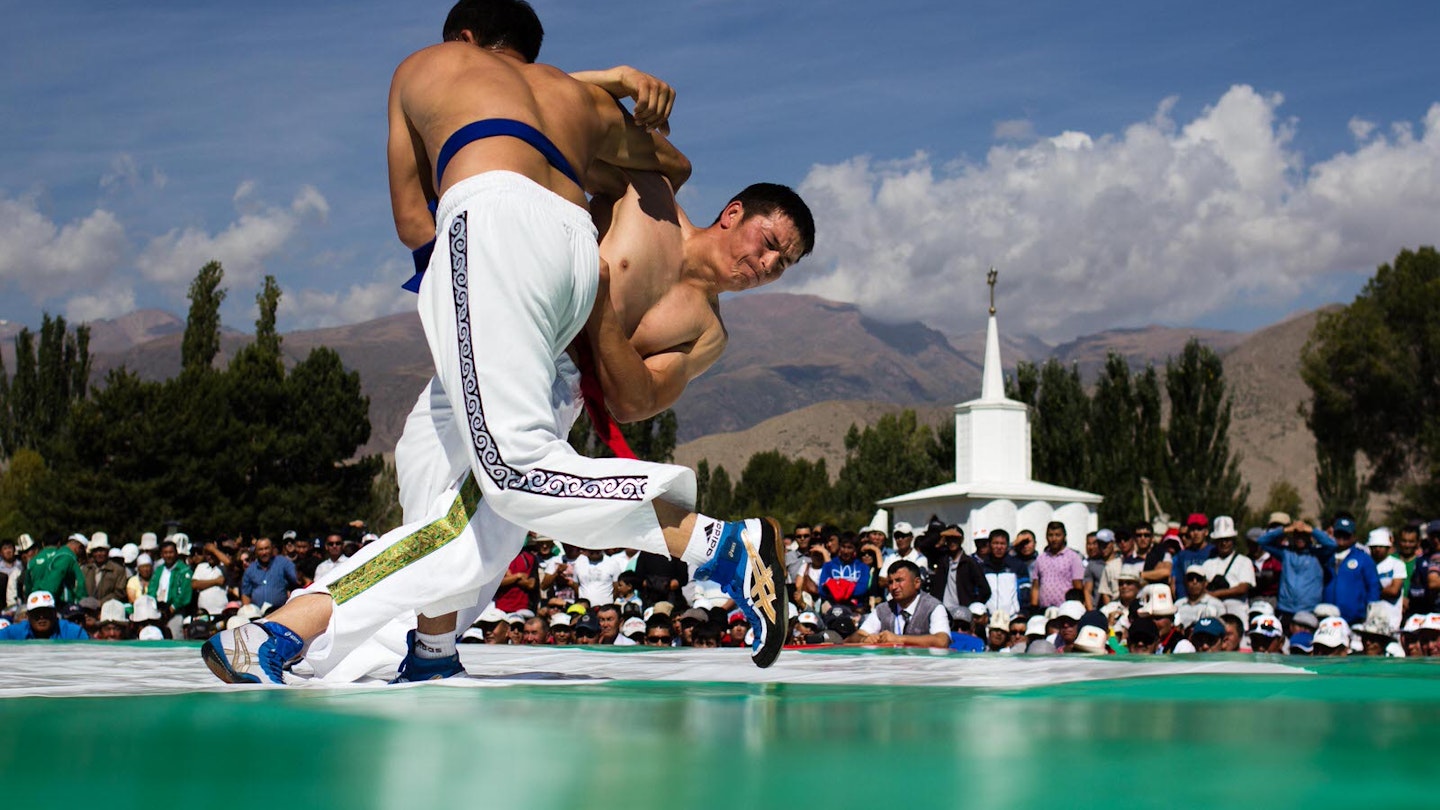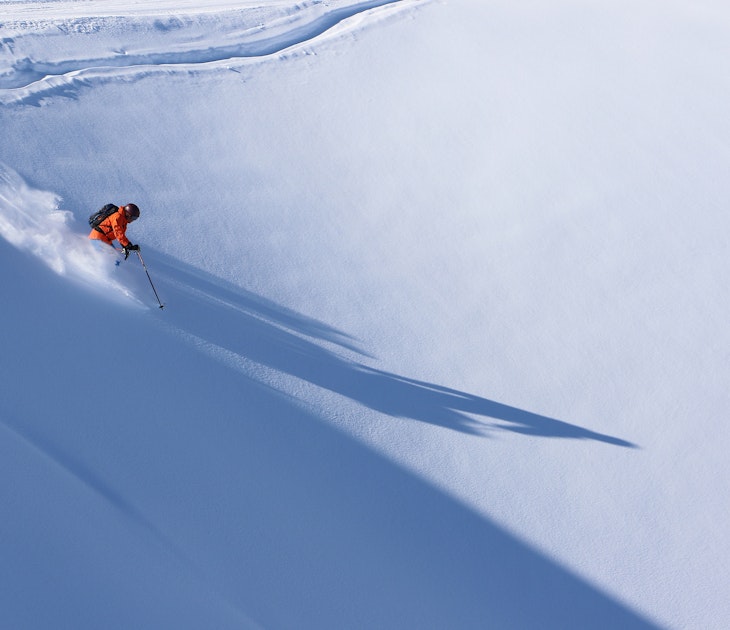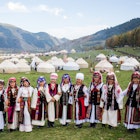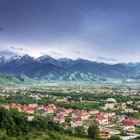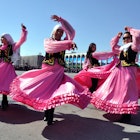A crowd roars as a favourite local wrestler pins his opponent for the championship. A rumble of shock as a single horse-and-jockey fall to the back of a long field of galloping racers. Tense anticipation as kok boru captains astride their horses struggle for possession of a goat carcass and control of the game. For the Central Asian nations, language and history are not the only ties that bind.
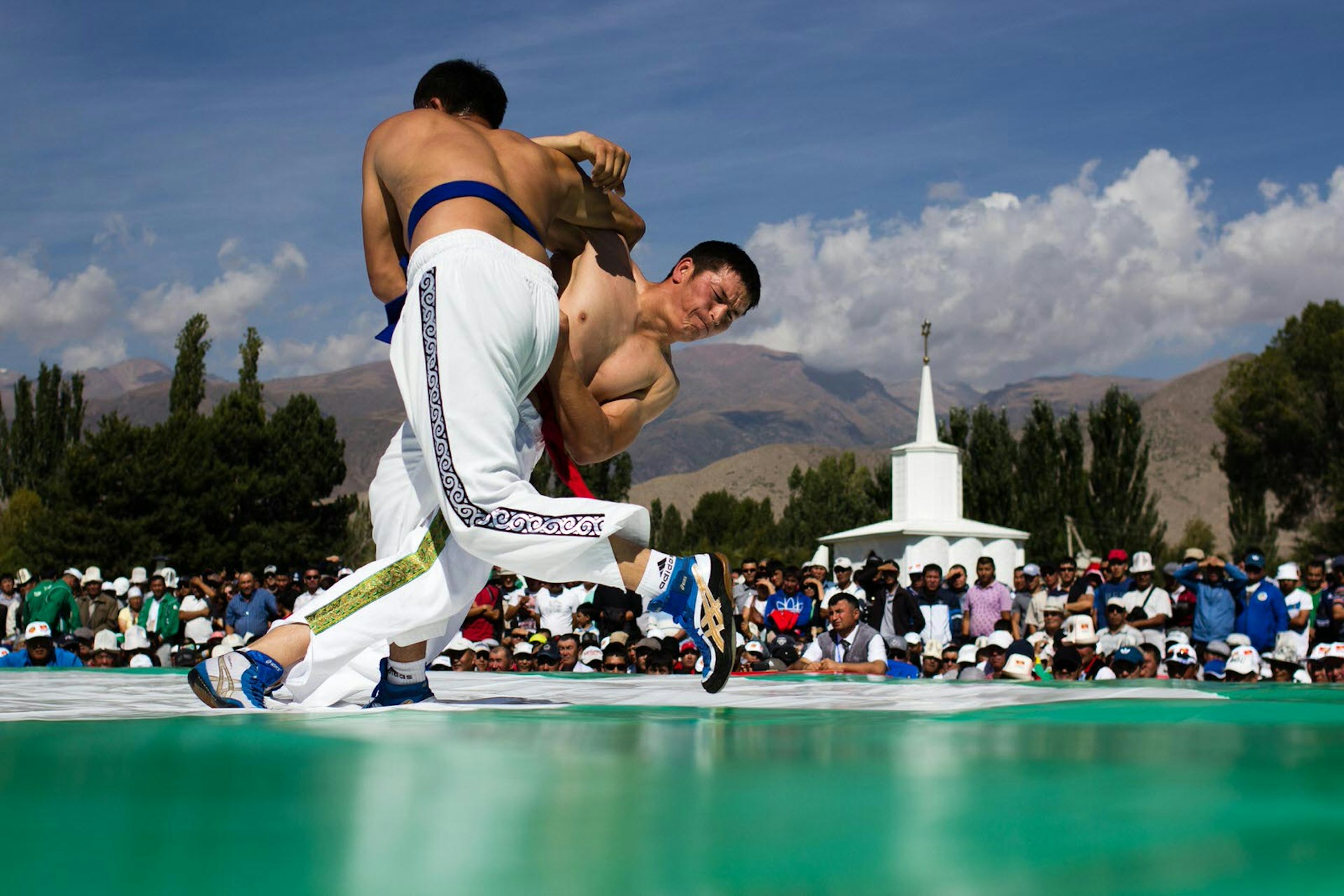
Nomadic sporting traditions handed down over thousands of years have been used in Central Asia to train for work and for war. Almost all are played exclusively by men, although women's Kyrgyz wrestling is sometimes present in modern competitions.
A resurgence in the popularity of these games across Central Asia, as well as the hosting of international competitions such as the World Nomad Games, in recent years has also transformed them into a vehicle for sharing the region's culture with the broader world. Watching these traditional sports is a rich addition to any trip through the region.
Kok boru
Kok boru – or goat-carcass polo – is the most famous of Central Asia's traditional sports, and certainly the one that grabs the most headlines. Historically, the sport was used to train young shepherds to protect their herds from predatory wildlife and prepare them for the realities of war. Legend says that the game, whose name translates as 'grey wolf' in the Turkic languages or 'goat grabbing' from the Persian buzkashi, was created when a group of horsemen on the steppe cooperated to catch the wolves that worried their livestock.
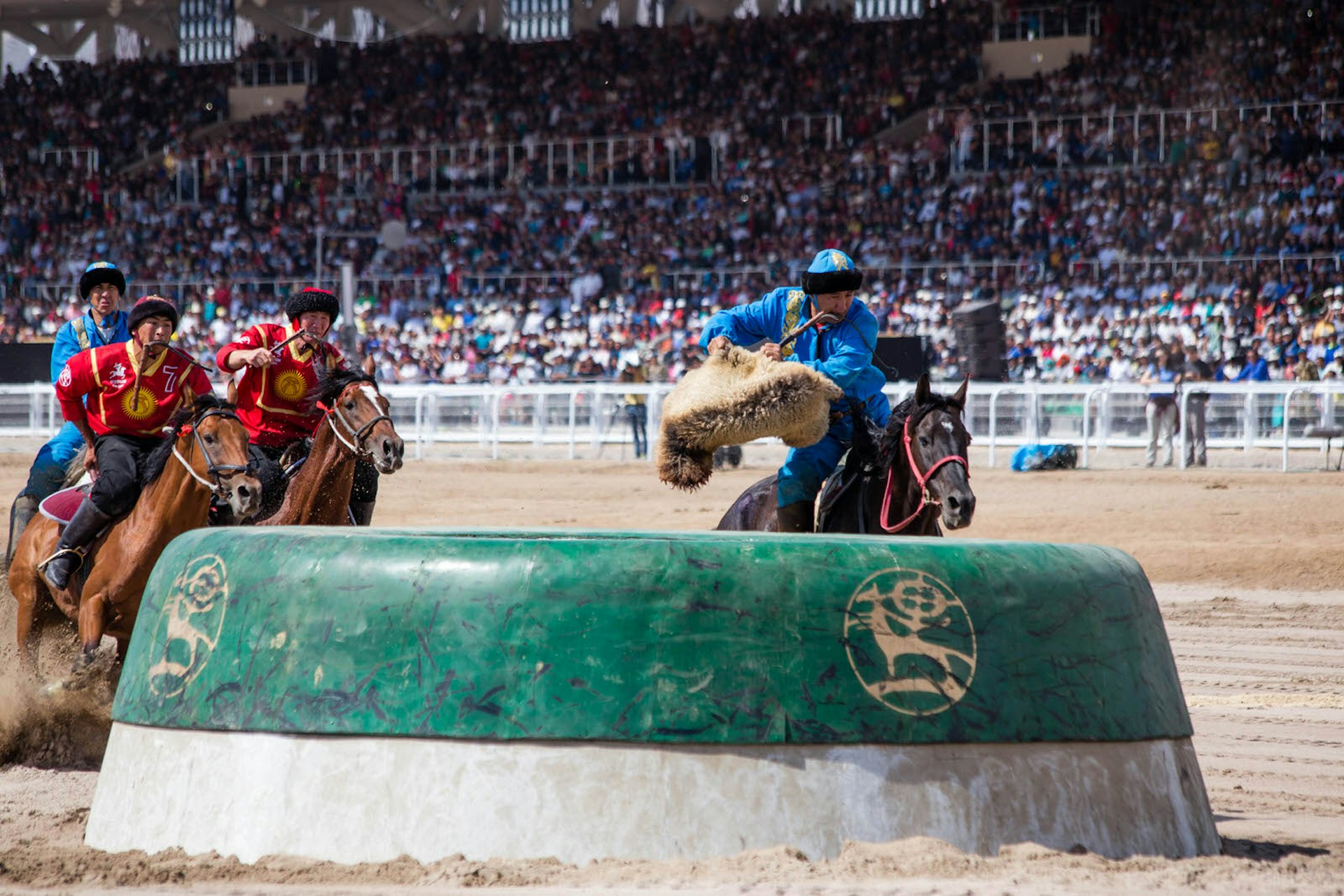
The modern version is played in most of Central Asia with two teams fighting for possession of the carcass, known as the buz. The team that tosses it into the kazan goals on either end of the field the most number of times wins. Kok boru is a central feature of the Nowruz festival throughout the region, as well as many national holidays.
Equestrian wrestling
Er enish consists of two wrestlers on horseback attempting to throw one another off. The rules are simple: the first to touch the ground loses. The primary focus is rider versus rider, of course, but skilled combatants also train their mounts to get into the game.
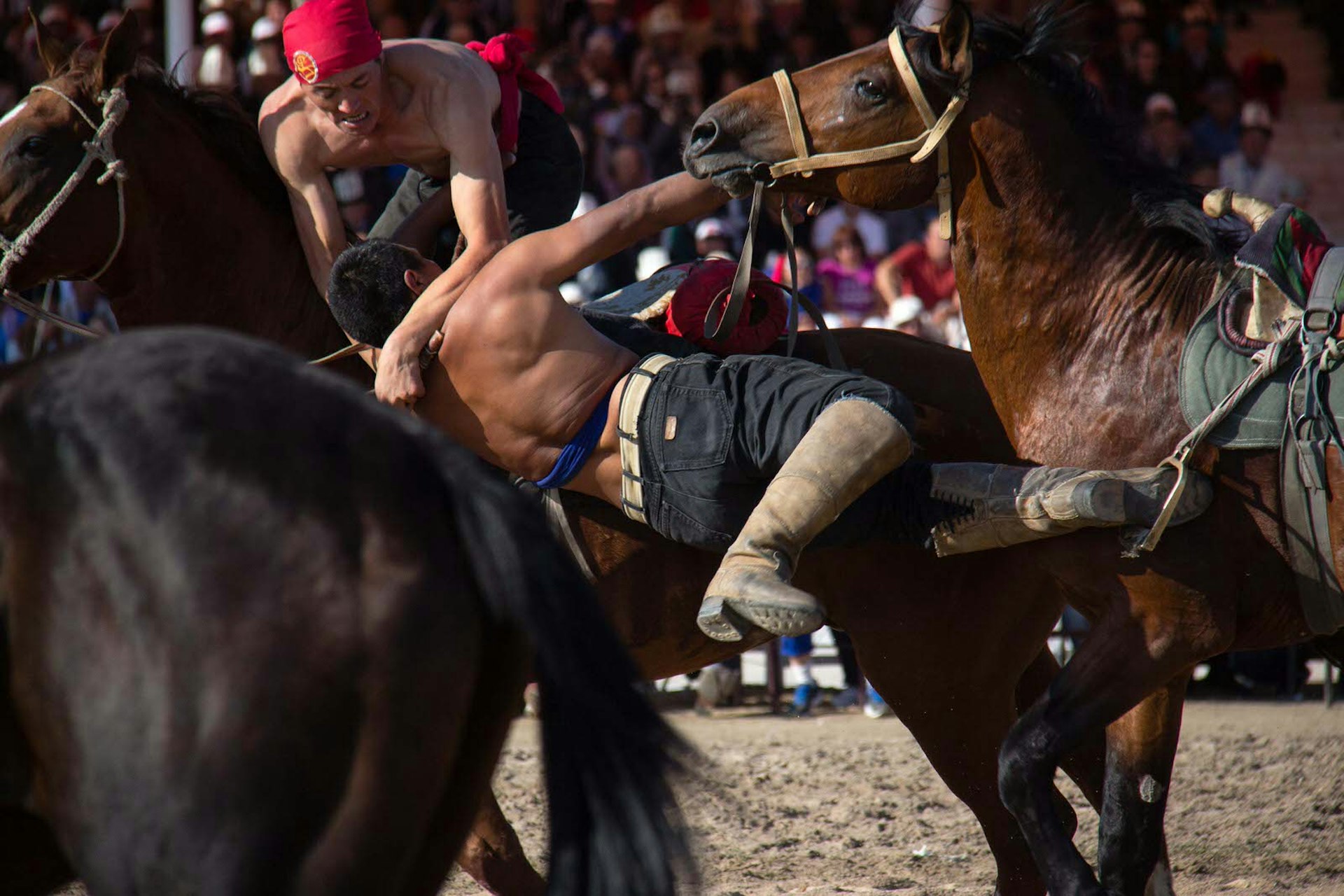
A charging and rearing maelstrom, er enish is one of the most exciting Central Asian sports for spectators, especially when the competition gets a little out of control and charges into the crowd surrounding the match. A word to the wise: keep a good eye on the field if you’re up close or watching through a camera lens.
Martial wrestling
Wrestling comes in many types in Central Asia, though most commonly as a floor sport. There are plenty of variations:
- Kyrgyzstan – alysh: pin an opponent while holding his belt
- Turkmenistan – goresh: force an opponent to touch the ground with anything but his feet
- Kazakhstan – kuresh: grab an opponent by the belt and keep hold of it till you throw him to the ground
- Tajikistan – gushtigiri: grapple an opponent and throw him to the ground
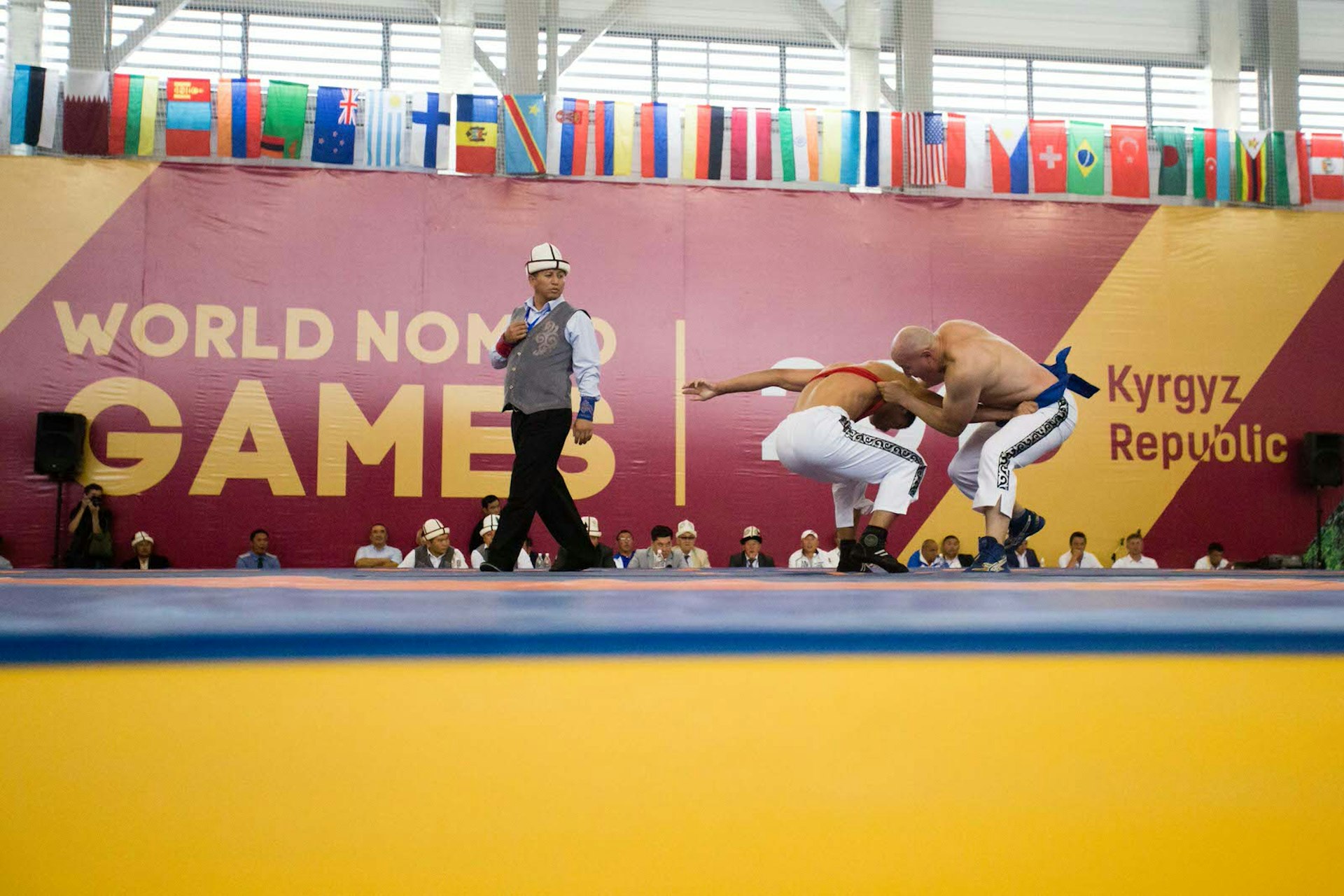
The prevalence of styles is in part accounted for by the long history of wrestling in Central Asia. Archaeological evidence has traced the sport back to at least the Sogdian period in the 6th century BC, and legend carries the origin to much remoter times. In modern sport, too, wrestling remains a dominant focus of the region's athletic tradition, and the vast majority of Olympic medals won by Central Asian states have come from the martial disciplines.
Horse racing
Horse racing shows up in varied styles, depending on the age of the rider and horse or the length of the race.
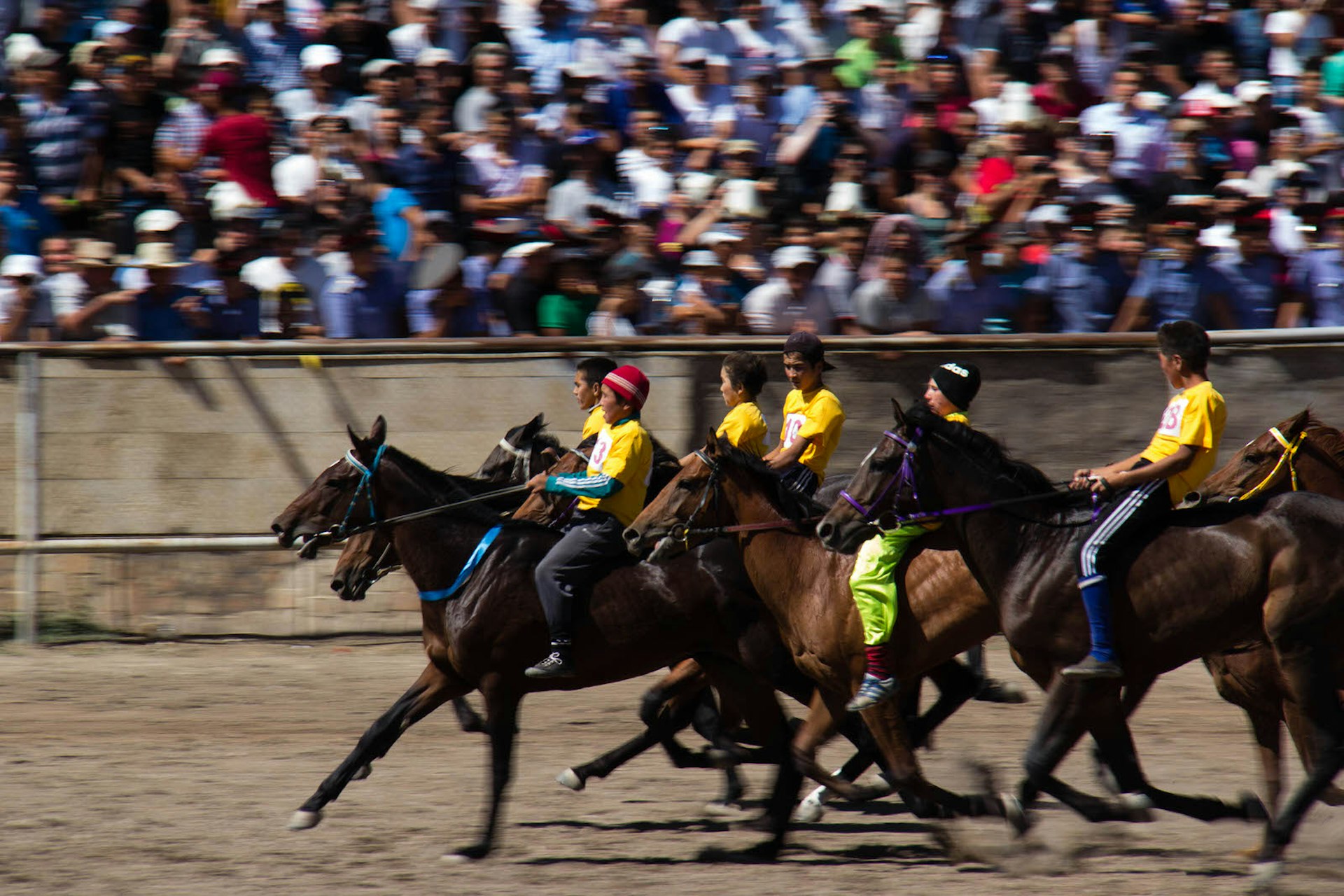
The names change from culture to culture, but three general types of horse racing are popular across Central Asia:
- Long distance races, with adult riders covering 80 kilometres or more on mature horses
- Medium-length races between jockeys of almost any age on almost any horse
- Young riders on young horses: kids as small as twelve riding two-to-three-year-old horses on short tracks
Though popular throughout the region, these races are of particular cultural significance in Kyrgyzstan and Kazakhstan, where horse-reliant nomadic lifestyles still exist to some degree. As a Kyrgyz folk saying goes, "If you only have a day left to live, spend half of it riding a pacer horse."
Group games
Equally popular among people of all ages, throwing sheep bones around is the basis for a whole class of games across Central Asia. Not unlike playing marbles, these games consist of individuals or teams that take turns using a large cow bone to strike sheep ankle bones one at a time, attempting to knock them out of a large chalk circle. In one of its most popular forms in Kyrgyzstan, this game is known as ordo.
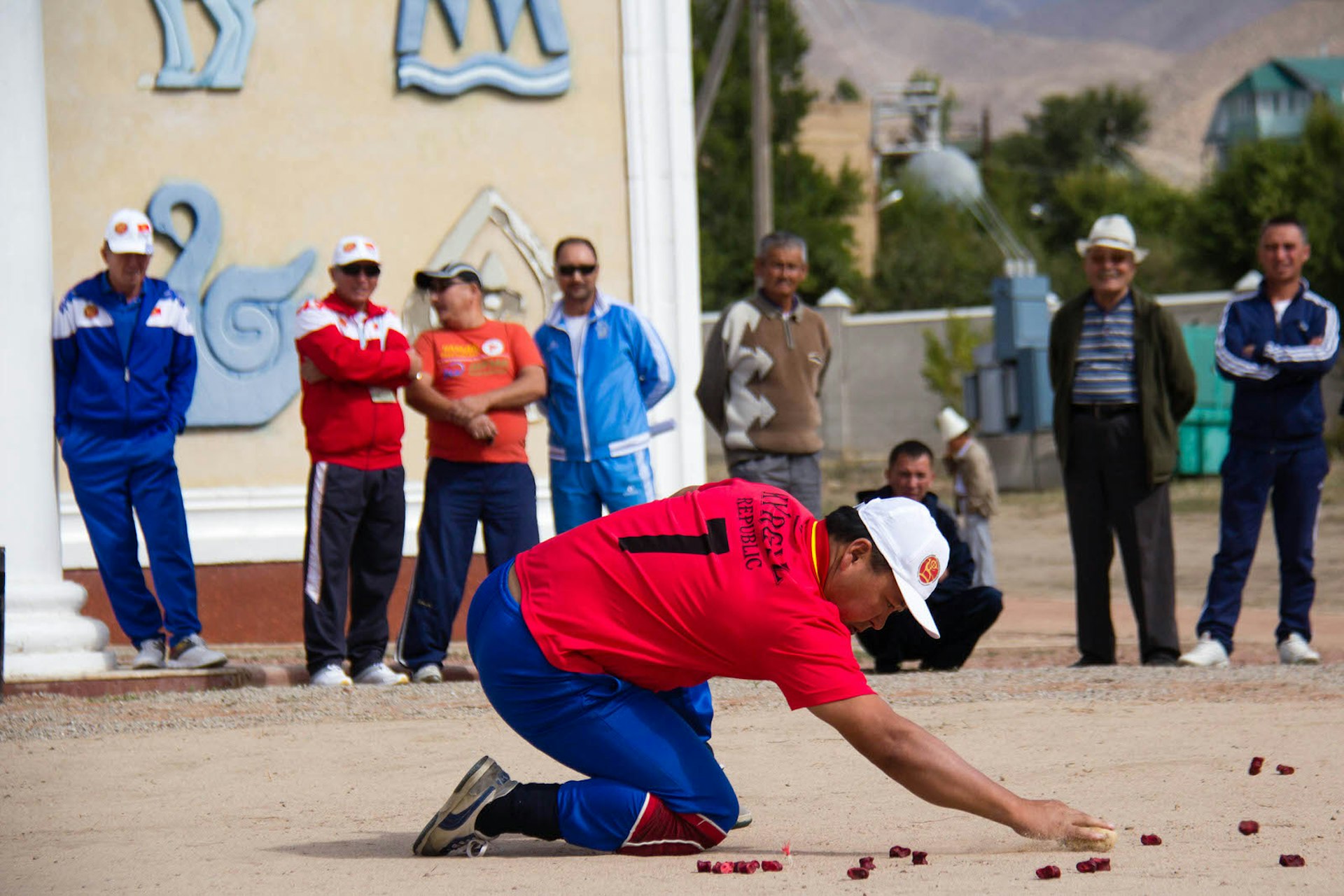
In formal competition, when one player fails the other team takes over and turns continue until the circle is cleared of all bones. The team that collects the most is the winner.
More common is a derivative game played on the streets during public holidays, especially Nowruz, in which a game-master uses sheep ankles to pin small notes of currency to the ground. Players from the crowd pay for a chance to throw another bone from outside the circle in an attempt to free (and thus win) the money.

Travelling in Central Asia offers plenty of chances to witness these traditional games in action. The biennial World Nomad Games (worldnomadgames.com), held every second September in Kyrgyzstan, is international festival of traditional Central Asian sports that draws teams from across the globe to compete in everything from kok boru to horse racing. In Mongolia, you can also see similar traditional sports each July during Naadam, a festival incorporating the ‘three manly games’ of horse racing, wrestling and archery.
